#Kalevala Epic
Text
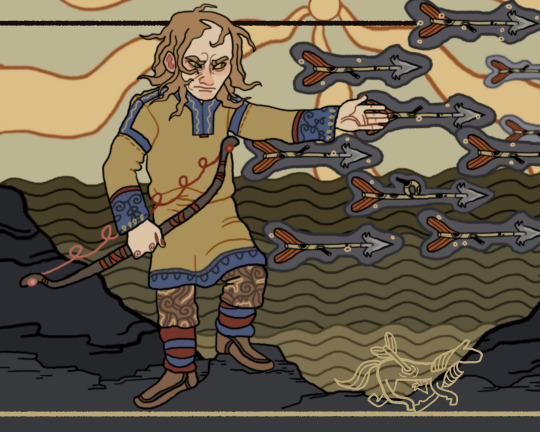
"Nevermore, old Väinämöinen,
Nevermore in all thy life-time,
While the golden moonlight glistens,
Nevermore wilt fix thy vision
On the meadows of Väinölä,
On the plains of Kalevala;
Full six years must swim the ocean,
Tread the waves for seven summers,
Eight years ride the foamy billows,
In the broad expanse of water;
Six long autumns as a fir-tree,
Seven winters as a pebble;
Eight long summers as an aspen!"
#my art#karjala#Kalevala#Kalevala Epic#Väinämöinen#Joukahainen#rune 6#rune VI#Elias Lönnrot#Karelian folklore#Finnish folklore
93 notes
·
View notes
Text

Joseph Alanen (1885-1920), 'Ilmatar', 1913-1916
"In the Kalevala, the Finnish national epic, Ilmatar was a virgin spirit and goddess of the air.
The name Ilmatar is derived from the Finnish word ilma, meaning "air," and the female suffix -tar, corresponding to English "-ress". Thus, her name means Airress. In the Kalevala she was also occasionally called Luonnotar, which means "female spirit of nature" (Finnish luonto, "nature").
She was impregnated by the sea and wind and thus became the mother of Väinämöine (..."a demigod, hero and the central character in Finnish folklore and the main character in the national epic Kalevala by Elias Lönnrot.")
Source
254 notes
·
View notes
Text
Satine is someone who visibly appreciates and invests in art and I was sort of assuming that her choice of dress just reflected that, and that it probably had it’s roots in Mandalorian civilian culture, ...but now I’m thinking it could be a traditional style of Kalevala. Tradition is important to her despite being a reformer, and her style has a slightly different vibe to the general architectural and artistic designs in Sundari and it’s fashions.
#satine kryze#i'm always something about her being from Kalevala. it feels deliberate but i don't know if it is#if i put mandos being based on vikings/nordics and her coming from a planet in the sector named for a finnish epic#am i reading too much into it if I sit here and think hmm sounds like Kalevala was a colony
81 notes
·
View notes
Text
reading like mythology is fun. it's just fun. you get the old "i'm gonna drown myself in the lake!" bit but it's dressed in oldish fancy sounding words and it's also many many times more dramatic
how? well, i hope i get this right: my family is forcing me to wed an old man i do not want to intertain, i cry. mother asks why. it's obvious, i say, better would have been if i hadn't been born at all, died as a baby. i would miss none of you. i know my leave won't bring you sorrow now, but my gruesome death will make you suffer, too. my last words shall be a curse, my blood will be in the water you bake with, the fish you get will be of my flesh, my bones will be the sticks you fall on on the shore and you will wash your eyes in the water that killed me
#idk maybe this doesn't quite capture it but the epic just hits different#i hope that has everything i meant for it to. if not then complain because fuck if i know anything about translating old poems#don't come for me kalevala people i am reading it but in a very disorganised manner
6 notes
·
View notes
Text
youtube
Väinämöinen
#väinämöinen#finnish mythology#finnish myths#finnish art#finnish stuff#finnish film#finnish folklore#finnish cinema#finnish culture#finnish nature#finnish music#finnish things#finnish painter#elias lönnrot#kalevala#wise man#wisedom#epic#epic art#tavastia#creation story#the creation of adam#the creation#shaman#ancient history#mythology and folklore#mythology art#norse mythology#norse gods#norse art
3 notes
·
View notes
Note
hi hi!! this is the main blog for @itscodyelliot , i reblogged your post about finnish music about a week ago. i just wanted to update you that i've started listening to your recommendations, so far i've listened to kalevauva.fi's 2017 and 2022 albums. i think that taking forum posts is really unique and creative!! i don't know the translations of what they're saying but it sounds really good just from listening. they incorporated those online comments really well (from a non-finnish speaker's perspective). also i love their guitar, it's incredibly nostalgic for me
if you don't want me to update you as i go lmk and i'll leave you alone, but if you don't mind ima check out Käärijä next! i discovered one of my current favorite bands (Måneskin) from tumblr eurovision posts a year or two ago, so i'm curious as to if i've heard his music before and not realized it.
okay bye have a wonderful day!!
How wonderful! I'm glad you've enjoyed their music. I also think their music approach is unique, I haven't really seen the same being done on a scale of a duo making songs only from existing forum posts, before? There's always the occasional "making a song out of hate comments I've gotten!" but that's about it. And as a Finnish-speaker their lyrics come together really nicely! Often the duo will take "roles" in their songs, singing specific lyrics written by specific forum users, creating this sort of dialogue. My favourite instance is Sinappitutut ("Mustard Acquaintances"), where one person tries to defend their strange relationship classification system while "others" (the other guy) berate them.
If you're looking for translations, people in the YouTube comments of their music videos sometimes provide them, but I would actually love to translate some songs, too! And I mean that in earnest. I take great enjoyment in translating songs from Finnish to English, because I want to give people the chance to enjoy a song to its fullest potential. Heck, sometimes I just do them anyway even if they're not for anyone to read, for my favourite songs! Today while on my walk I was actually pondering lyric translations for Kalevauva.fi's song Panohanskat (err... "Fucking gloves")
Do tell what you think of Käärijä! And hit me up for lyrics :]
#kalevauva.fi's name actually comes from the words kalevala and vauva.fi#vauva.fi is the forum where they get most of their lyrics. very infamous site#kalevauva is the national epic of finland. it was collected by elias lönnrot who traveled around finland and karelia and wrote down -#spoken traditional stories and songs and poems#kalevauva.fi is therefore like kalevala of the modern age! writing down modern “stories”#elias lönnrot actually appears on the cover of their very first album for this reason haha#asks#codsfish#not fish
3 notes
·
View notes
Text


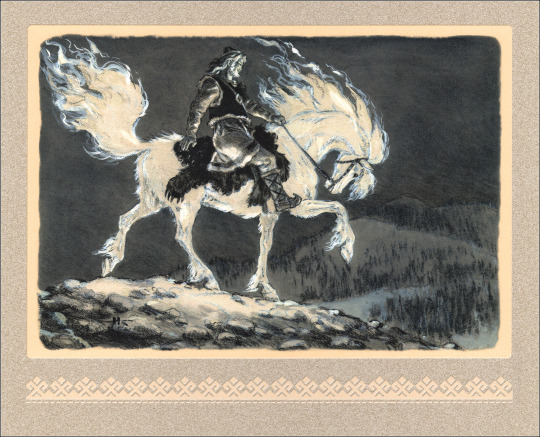
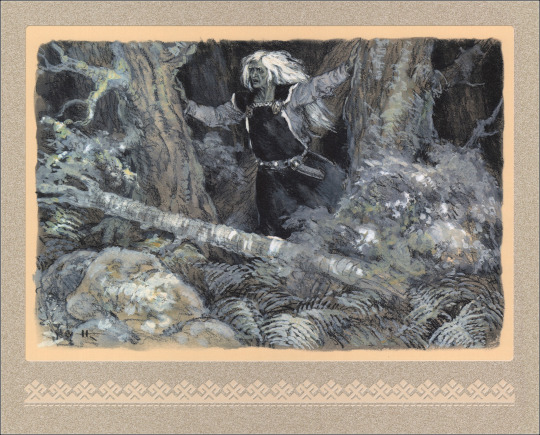



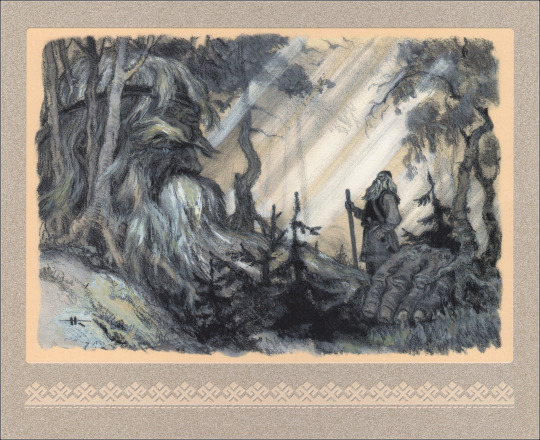


Kalevala
Illustrator Nikolai Kochergin
3 of 7
105 notes
·
View notes
Text
Lmao "most [classical literature] is from America or England anyway" see, I know that in american schools, they only learn anglo lit so it might be a case of "well, i've never heard of any other", but. How do you excuse that naivety in the 21st century? Do you think, in this big wide world, the only literature that could possibly be crowned with the "classic" epithet, is anglo? Because that's a little😬
#you know what counts as classics? kafka's works. the epic of gilgamesh. ovid's metamorphosis. national epics like the kalevala or beowulf#or the song of cid. orlando furioso. freed jerusalem.#the fucking divine comedy? petrarca's canzoniere? the decameron?#i mean fuck classical literature as in literally classical is ancient roman and greek sophocles and euripides and virgil and sappho#homer literally the illiad and the odyssey?!?!?!?!?#and i want you all to note that my area of ''expertise'' is european literature. there's a lot more out there bc there are six populated#continents in the world like
112 notes
·
View notes
Text
If I had a nickel for every time a girl in a national epic drowned herself shortly after having sex I’d have two nickels, which isn’t a lot, but it’s weird that it happened twice, right?
#kalevala#kullervo’s sister#kalevipoeg#son of kalev’s five minute girlfriend#national epic#finland#estonia#literature#aino would’ve counted if it was only about a girl in a national epic drowning herself#but aino really said I want no GILF#anyway#uh#yeah#doofenschmirtz meme
13 notes
·
View notes
Text
Here in Finland, Thanksgiving is not celebrated at all. On the subject, however, we have a national cornucopia myth. The national epic Kalevala focuses on the Sampo story, which is a kind of miraculous mill, whose forging and the struggle to own it are told in the poems.
Keywords: cornucopia, folklore, Kalevala, witches, envy

youtube
🎧Is from Hunger Games The national anthem Horn of Plenty. In the film (s) it is like the goddess Diana is fighting against the evil ideology, but she herself becomes an ideology.
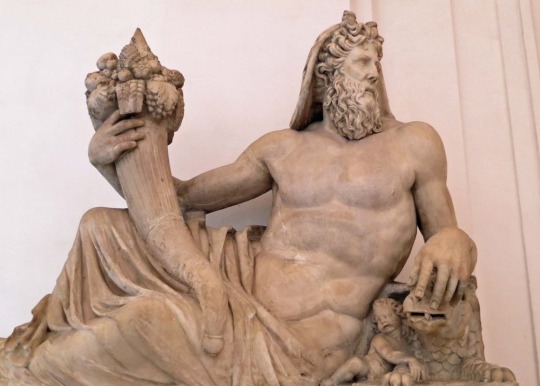
In the Greek mythology Zeus as a child broke his nursemaids horn (she was a goat Amaltheia), that became a Horn of plenty. A kind of magical phallos - mother was no longer needed.

Miracle mills can be found in fairy tales and folklore round the world. Philosophers have always been preoccupied with the question of whether man would be happy if he did not have to strive for his livelihood. Even Neurological research supports the idea that the search itself gives a meaning, the seeking process. (Panksepp).

In the ancient Finnish (Baltic-Finnish peoples) poems Sampo had a very prominent role. The most familiar story we find in the Kalevala. The main characters in the Sampo poems are: the wise man Väinämöinen, the blacksmith Ilmarinen, the queen of the north Louhi. All of them have magical powers. I have made some non-serious “player cards” that might make it easier to remember these characters.



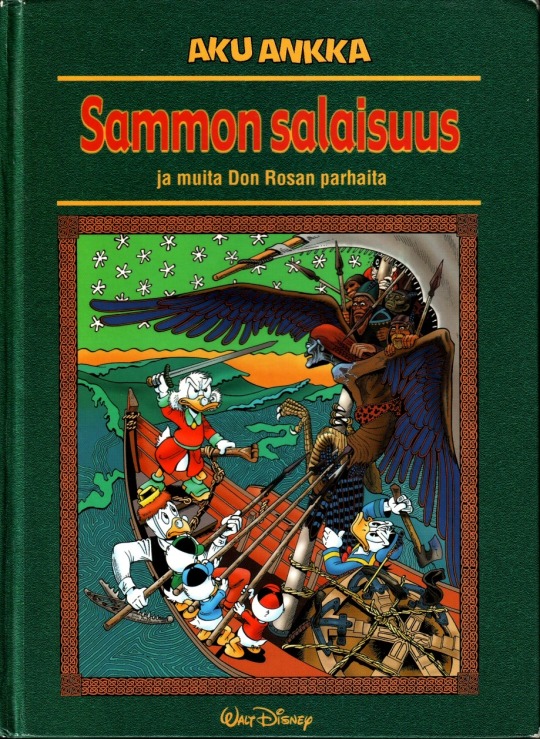
Matriarch Louhi helps the wizard Väinämöinen, basically saves his life. As a reward she asks a Sampo, magical mill. Väinämöinen knows that a blacksmith Ilmarinen could make it. Mistress Louhi has also a lot of daughters. Both Ilmarinen and Väinämöinen start a competition where they try to prove their value to Louhi.
Finnish myth Sampo is also a cornucopia myth. Like so often in the myths, things go badly and the task remains unreachable. In the myth of the Sampo men of the väinöland are trying to steal the Sampo back from the phallic woman, by using phallic means.
It is suggested that the Finnish word “kateus” (envy) is synonymous with “Noita” (witch). It is oftentimes suspected that part of the 15th-17th century witch-hunts was the result of hunger. That people lived through particularly bad harvests. But the Envy does not explain the phenomena fully. Surely it is one emotion that featured in those times, between the neighbors.
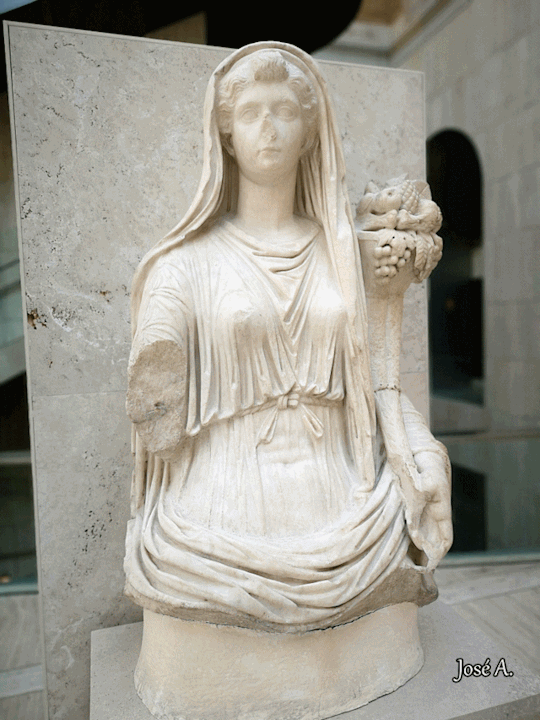
Psychoanalytical point of view: As Melanie Klein has stated, envy is in all of us and the lack reinforces it. Magical phallos is denial of the lack - in the perverse universe (Chassequet-Smirgel) the lack is denied and the desired thing is stolen rather than worked through.
The opposite is to tolerate the rejection and trauma of smallness. Integration of good and bad images of the mother/object (and your self), and acceptance of the difference can lead to growth. Inner space - mother’s special force stays with her like the lid of the Sampo in the myth is finally scattered for everywhere. In many magic mill -tales it is lost in the sea. “Pushed back in to the subconscious” - like G.Hägglund & V.Hägglund have suggested.
#thanksgiving#cornucopia#cornucopias#kalevala#mythological#finland#baltic sea#psychoanalysis#melanie klein#Janine ChassequetSmirgel#don rosa#Zeus#ancient greek#poetry#National epics#breast envy#envy#witchcraft#magic#witch#noita#Youtube#SoundCloud#panksepp#loviatar#louhi#akseli gallen kallela#hunger games
9 notes
·
View notes
Text

I'm reconstructing my plan to illustrate the "Kalevala" epic, so here's a little spoiler with Joukahainen
/I want to warn you that when drawing characters from "Kalevala", I based on my impressions and fantasy, so they may not match with other artists/
23 notes
·
View notes
Text

Akseli Gallen-Kallela
Scene of the Kalevala, the Finnish national epic:
Väinämöinen tries to steal Sampo,the magical device can create wealth, from the witch queen Louhi.
7 notes
·
View notes
Text


Nikolai Kochergin - illustrations depicting scenes from the Kalevala.
#kalevala#finland#finnish#folklore#poetry#epic poem#nikolai kochergin#illustration#fantasy illustration#book illustration#sampo
4 notes
·
View notes
Text
Discovery: Emmi Maaria
Emmi Maaria is a Finnish, London-based alternative pop artist who has caught my attention through her striking debut single. The first part of a three-part story, it’s called I Move Deeper Wading Into The Waters.
(more…)

View On WordPress
#alternative pop#beautiful#captivating#classical#crystalline#debut#dramatic#Emmi Maaria#Finnish epic poem#heart-breaking#I Move Deeper Wading Into The Water#Kalevala#london#modern#poetic#timeless#unique
1 note
·
View note
Text
Útiseta
#shaman#shamanism#norse shaman#norse shamanism#finland#finnish#kalevala#finnish epic#magic#ancient civilization#ancient civilizations#norse#old norse#norse culture#norse society#viking#vikings
0 notes
Text
Terry Pratchett about fantasy ❤
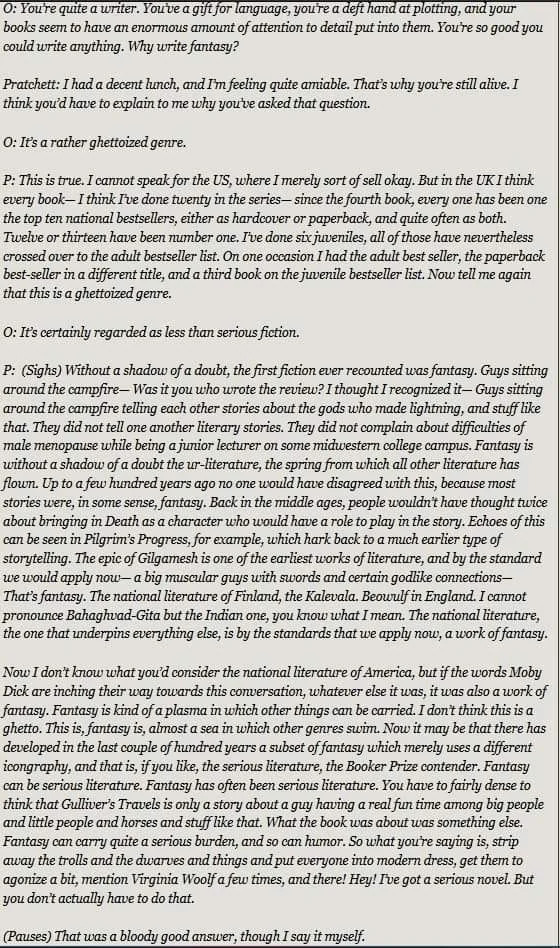
Terry Pratchett interview in The Onion, 1995 (x)
O: You’re quite a writer. You’ve a gift for language, you’re a deft hand at plotting, and your books seem to have an enormous amount of attention to detail put into them. You’re so good you could write anything. Why write fantasy?
Terry: I had a decent lunch, and I’m feeling quite amiable. That’s why you’re still alive. I think you’d have to explain to me why you’ve asked that question.
O: It’s a rather ghettoized genre.
Terry: This is true. I cannot speak for the US, where I merely sort of sell okay. But in the UK I think every book— I think I’ve done twenty in the series— since the fourth book, every one has been one the top ten national bestsellers, either as hardcover or paperback, and quite often as both. Twelve or thirteen have been number one. I’ve done six juveniles, all of those have nevertheless crossed over to the adult bestseller list. On one occasion I had the adult best seller, the paperback best-seller in a different title, and a third book on the juvenile bestseller list. Now tell me again that this is a ghettoized genre.
O: It’s certainly regarded as less than serious fiction.
Terry: (Sighs) Without a shadow of a doubt, the first fiction ever recounted was fantasy. Guys sitting around the campfire— Was it you who wrote the review? I thought I recognized it— Guys sitting around the campfire telling each other stories about the gods who made lightning, and stuff like that. They did not tell one another literary stories. They did not complain about difficulties of male menopause while being a junior lecturer on some midwestern college campus.
Fantasy is without a shadow of a doubt the ur-literature, the spring from which all other literature has flown. Up to a few hundred years ago no one would have disagreed with this, because most stories were, in some sense, fantasy. Back in the middle ages, people wouldn’t have thought twice about bringing in Death as a character who would have a role to play in the story. Echoes of this can be seen in Pilgrim’s Progress, for example, which hark back to a much earlier type of storytelling. The epic of Gilgamesh is one of the earliest works of literature, and by the standard we would apply now— a big muscular guys with swords and certain godlike connections— That’s fantasy. The national literature of Finland, the Kalevala. Beowulf in England. I cannot pronounce Bahaghvad-Gita but the Indian one, you know what I mean. The national literature, the one that underpins everything else, is by the standards that we apply now, a work of fantasy.
Now I don’t know what you’d consider the national literature of America, but if the words Moby Dick are inching their way towards this conversation, whatever else it was, it was also a work of fantasy. Fantasy is kind of a plasma in which other things can be carried. I don’t think this is a ghetto. This is, fantasy is, almost a sea in which other genres swim. Now it may be that there has developed in the last couple of hundred years a subset of fantasy which merely uses a different icongraphy, and that is, if you like, the serious literature, the Booker Prize contender. Fantasy can be serious literature. Fantasy has often been serious literature. You have to fairly dense to think that Gulliver’s Travels is only a story about a guy having a real fun time among big people and little people and horses and stuff like that. What the book was about was something else. Fantasy can carry quite a serious burden, and so can humor. So what you’re saying is, strip away the trolls and the dwarves and things and put everyone into modern dress, get them to agonize a bit, mention Virginia Woolf a few times, and there! Hey! I’ve got a serious novel. But you don’t actually have to do that.
(Pauses) That was a bloody good answer, though I say it myself.
6K notes
·
View notes